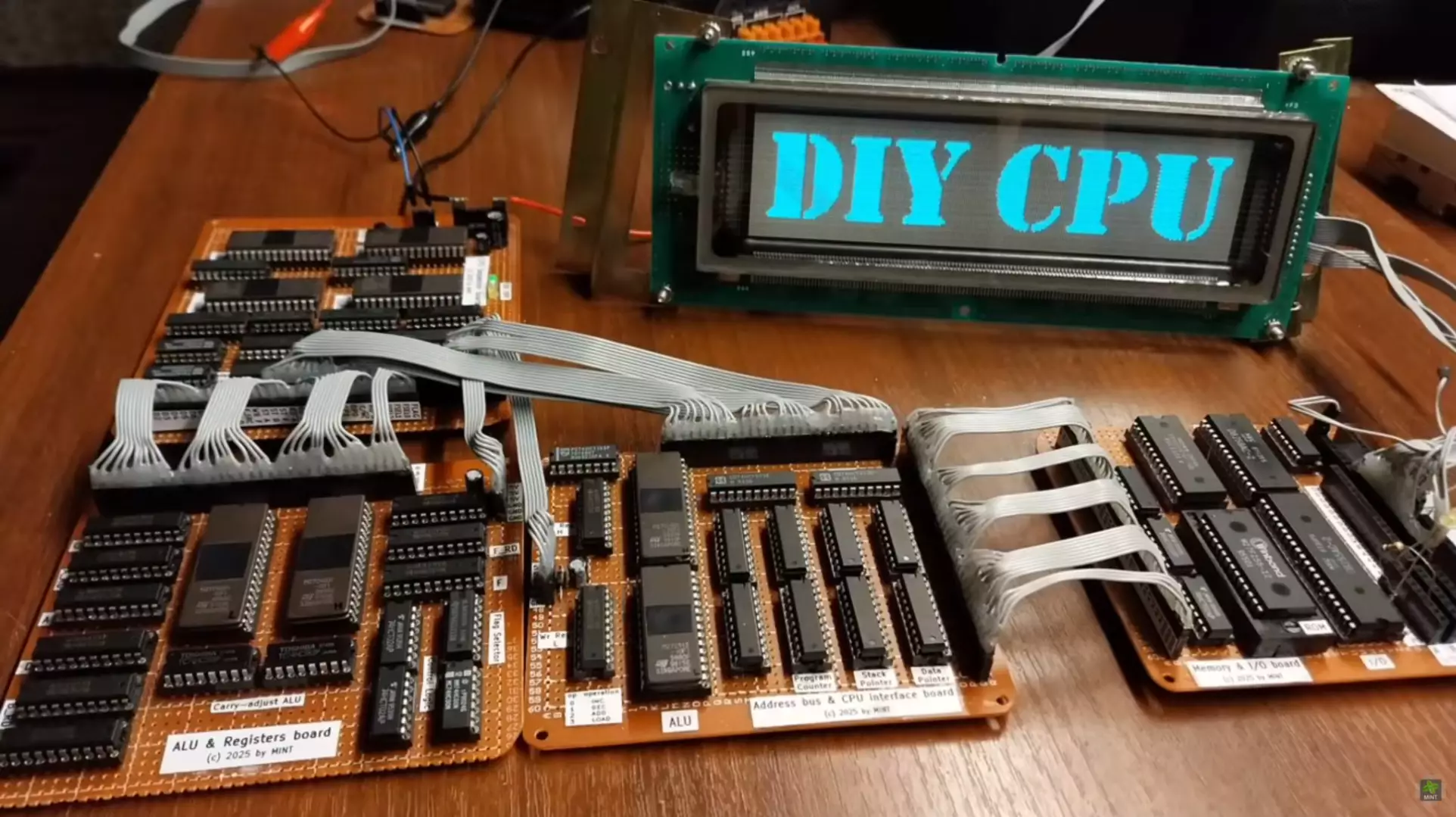In a landscape dominated by mass-produced hardware and commercialized technology, the act of crafting a processor from the ground up is a bold testament to human ingenuity. It challenges the notion that modern computing is solely the domain of large corporations with access to cutting-edge manufacturing facilities. The recent project showcase by Polish YouTuber Majsterkowanie i nie tylko (MINT) not only breaks this mold but redefines what is possible within the realm of individual maker culture. His labor of love—a custom-built, working CPU assembled from vintage components—serves as an inspiring blueprint for those who believe that innovation begins with curiosity and perseverance, rather than huge budgets or resources.
Perhaps most striking about this project is its deeply nostalgic yet pioneering spirit. By circling back to the foundational chips of computing history, specifically the Zilog Z80—once the core of early personal computers and portable devices—MINT illuminates how understanding fundamental technology can lead to extraordinary achievements. This is not just an academic exercise; it’s a reinvigoration of the craftsmanship and curiosity that propelled the early days of computing. Building from scratch, soldering each part, and coding the entire system affirms that the essence of engineering lies in hands-on experimentation, not just in software abstractions or factory lines.
A Journey Through Time and Technology
What makes MINT’s achievement particularly compelling is the timeline—just three months of dedicated effort to transform a pile of obsolete memory chips into a functioning CPU. This timeframe underscores the remarkable dedication and patience involved. It’s easy to dismiss the project as a minor novelty, but beneath this simplicity lies an intricate tapestry of electrical engineering, logic design, and debugging. Every resistor, every transistor, and every line of code represents countless hours of trial, error, and learning.
The process began with what many would consider trash—discarded memory chips—which MINT experimented with initially for rudimentary tasks like controlling motors or dimming lights. However, with a keen eye for possibility, he realized that these seemingly useless components could be repurposed into a cohesive computing system. The transition from simple control projects to building an entire 8-bit processor exemplifies how deep knowledge and creative problem-solving can turn junk into a functional marvel.
While many tech enthusiasts enjoy tinkering with modern microcontrollers or buying pre-built kits, the act of assembling a CPU from vintage parts immerses one in the fundamental principles of digital logic. It’s an immersive education—one that reveals the hardware-software interplay and demystifies the abstractions embedded in commercial chips.
Challenging Convention and Inspiring Innovation
The practical implications of such a project transcend nostalgia; they serve as a testament to the viability of DIY innovation in an era increasingly dominated by complex, closed systems. MINT’s CPU, dubbed the “EPROMINT,” is more than an artistic or educational feat. It’s a bold statement: meaningful experimentation does not require millions of dollars, advanced clean rooms, or large teams. Instead, it demands curiosity, perseverance, and a willingness to understand the raw components that define modern computers.
By connecting his homemade CPU to a small VFD display and programming it to play scenes from The Matrix, MINT demonstrates that even the most basic digital system can perform intriguing and recognizable tasks. The pixelated video play is a symbolic victory—proof that passion and dedication can create functioning systems from the simplest parts. It rekindles the spirit of hacking and hacking’s roots in curiosity rather than profit.
In the broader context, projects like this challenge us to rethink our relationship with technology. They remind us that the building blocks of computing are accessible, that complexity can be broken down into understandable segments, and that anyone with enough drive can create something extraordinary. For gamers, developers, and tech enthusiasts alike, it’s an invigorating call to dig deeper, learn more, and perhaps even craft their own unique devices from history’s discarded treasures.

